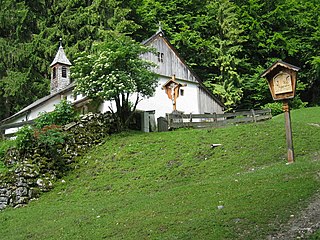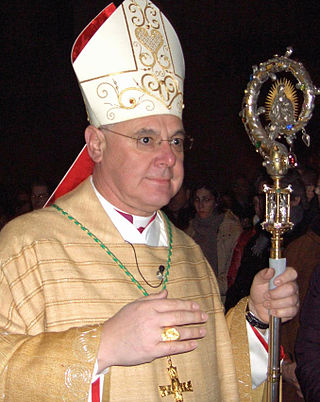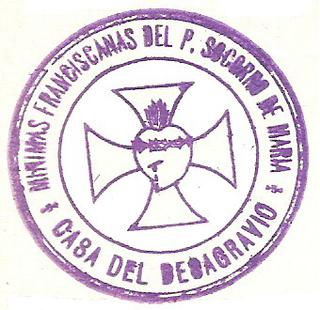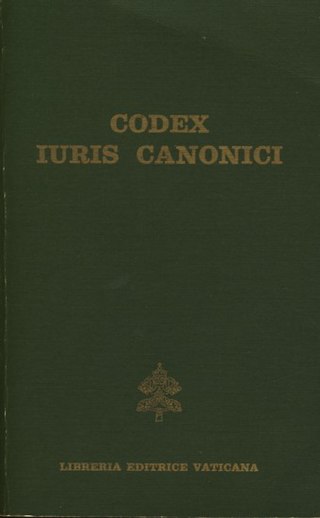The Roman Curia comprises the administrative institutions of the Holy See and the central body through which the affairs of the Roman Catholic Church are conducted. The Roman Curia is the institution which the Roman Pontiff ordinarily makes use of in the exercise of his supreme pastoral office and universal mission in the world. It is at the service of the Pope, successor of Peter, and of the Bishops, successors of the Apostles, according to the modalities that are proper to the nature of each one, fulfilling their function with an evangelical spirit, working for the good and at the service of communion, unity and edification of the Universal Church and attending to the demands of the world in which the Church is called to fulfill its mission.
A pastoral council is a consultative body in dioceses and parishes of the Catholic Church that serves to advise the parish priest or bishop about pastoral issues. The council's main purpose is to investigate, reflect and reach conclusions about pastoral matters to recommend to the parish priest or bishop as appropriate.
The hierarchy of the Catholic Church consists of its bishops, priests, and deacons. In the ecclesiological sense of the term, "hierarchy" strictly means the "holy ordering" of the church, the Body of Christ, so to respect the diversity of gifts and ministries necessary for genuine unity.

In the Catholic Church, a consecrated virgin is a woman who has been consecrated by the church to a life of perpetual virginity as a bride of Christ. Consecrated virgins are consecrated by the diocesan bishop according to the approved liturgical rite.

Consecrated life is a state of life in the Catholic Church lived by those faithful who are called to follow Jesus Christ in a more exacting way. It includes those in institutes of consecrated life, societies of apostolic life, as well as those living as hermits or consecrated virgins.
An institute of consecrated life is an association of faithful in the Catholic Church canonically erected by competent church authorities to enable men or women who publicly profess the evangelical counsels by religious vows or other sacred bonds "through the charity to which these counsels lead to be joined to the Church and its mystery in a special way". They are defined in the 1983 Code of Canon Law under canons 573–730. The Congregation for Institutes of Consecrated Life and Societies of Apostolic Life has ecclesial oversight of institutes of consecrated life.

Agostino Vallini is an Italian prelate of the Catholic Church. He has been a cardinal since 2006. From 2008 to 2017 he served as Vicar General of Rome. He is also the Archpriest emeritus of the Archbasilica of St. John Lateran.
The Directory of International Associations of the Faithful, initially published in 2006 by the Dicastery for the Laity, Family and Life, lists the international associations of the faithful in the Catholic Church that have been granted official recognition. It gives the official name, acronym, date of establishment, history, identity, organization, membership, works, publications, and website of the communities and movements.

In the Catholic Church, a bishop is an ordained minister who holds the fullness of the sacrament of holy orders and is responsible for teaching doctrine, governing Catholics in his jurisdiction, sanctifying the world and representing the Church. Catholics trace the origins of the office of bishop to the apostles, who it is believed were endowed with a special charism and office by the Holy Spirit at Pentecost. Catholics believe this special charism and office has been transmitted through an unbroken succession of bishops by the laying on of hands in the sacrament of holy orders.

The Order of Atonement of the Franciscan Minims of the Perpetual Help of Mary (mfPS) is a single Roman Catholic active/contemplative religious order distinguished by three branches: the Men's Branch for priests and brothers/friars, the Women's Branch for nuns and the Lay Branch for those of all ages and professions, including the sick, dying, and those children conceived but as yet "unborn" or "pre-born".

The 1983 Code of Canon Law, also called the Johanno-Pauline Code, is the "fundamental body of ecclesiastical laws for the Latin Church". It is the second and current comprehensive codification of canonical legislation for the Latin Church of the Catholic Church. The 1983 Code of Canon Law was promulgated on 25 January 1983 by John Paul II and took legal effect on the First Sunday of Advent 1983. It replaced the 1917 Code of Canon Law which had been promulgated by Benedict XV on 27 May 1917.
Precedence signifies the right to enjoy a prerogative of honor before other persons; for example, to have the most distinguished place in a procession, a ceremony, or an assembly, to have the right to express an opinion, cast a vote, or append a signature before others, to perform the most honorable offices.
Canon 915, one of the canons in the 1983 Code of Canon Law of the Latin Church of the Catholic Church, forbids the administration of Holy Communion to those upon whom the penalty of excommunication or interdict has been imposed or declared, or who obstinately persist in manifest grave sin:
Those who have been excommunicated or interdicted after the imposition or declaration of the penalty and others obstinately persevering in manifest grave sin are not to be admitted to holy communion.
The canonical situation of the Society of Saint Pius X (SSPX), a group founded in 1970 by Archbishop Marcel Lefebvre, is unresolved. The Society of Saint Pius X has been the subject of much controversy since 1988, when Bernard Fellay, Bernard Tissier de Mallerais, Richard Williamson and Alfonso de Galarreta were illicitly consecrated at Ecône, at the International Seminary of Saint Pius X as bishops in violation of canon law. Lefebvre and the four other SSPX bishops individually incurred a disciplinary latae sententiae excommunication for the schismatic act; the excommunications of the four living SSPX bishops were remitted in 2009.
The Community of the Beatitudes is one of the "new communities" established in the Catholic Church after the Second Vatican Council (1962–1965) in the movement of the Charismatic Renewal Movement. It was founded in France in 1973, and came under the ecclesial authority of the Archbishop of Albi in southern France since May 1975. It was recognised in 2002 by the Holy See as an association of the faithful. On December 3, 2008, the Pontifical Council for the Laity asked the Community to change its canonical form and come under the authority of the Congregation for Institutes of Consecrated Life and Societies of Apostolic Life. On June 29, 2011, the Holy See recognized the Community of the Beatitudes as a Public Association of the Faithful under the ecclesial authority of the Archbishop of Toulouse. On December 8, 2020, The Holy See recognized the Community of the Beatitudes as an Ecclesial Family of Consecrated Life of diocesan right by the Congregation for Institutes of Consecrated Life (CIVCSVA). This is the first community of consecrated life to be erected under the title.
This is a glossary of terms used within the Catholic Church. Some terms used in everyday English have a different meaning in the context of the Catholic faith, including brother, confession, confirmation, exemption, faithful, father, ordinary, religious, sister, venerable, and vow.

Catholic laity are the ordinary members of the Catholic Church who are neither clergy nor recipients of Holy Orders or vowed to life in a religious order or congregation. Their mission, according to the Second Vatican Council, is to "sanctify the world".
A Congregation of diocesan right is a type of religious congregation codified by the laws of the Catholic church, wherein the congregation is under the authority of a particular local bishop, rather than that of the pope. A congregation responsible directly to the pope is a congregation of pontifical right. Most of the major religious orders are congregations of pontifical right.
In the Catholic Church, communicatio in sacris, also called communicatio in divinis or communicatio in ritibus, designates the regulations for the partaking of a Catholic person to a non-Catholic sacrament or liturgical celebration, or for the partaking of a non-Catholic person to a Catholic sacrament or liturgical celebration. The expression is also used to refer to said acts of partaking themselves.
Pious association or pious union in the canon law of the Roman Catholic Church is the legal concept that describes an organization of Catholic persons, approved by the local ordinary, engaged in the practice of the spiritual and corporal works of mercy in the name of and in accordance with the teachings of the Church.









